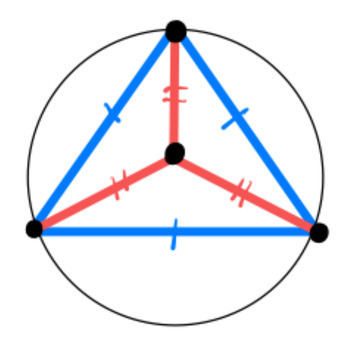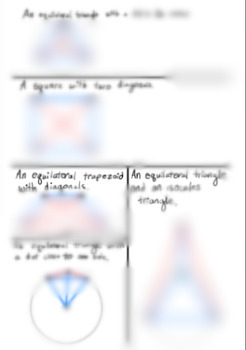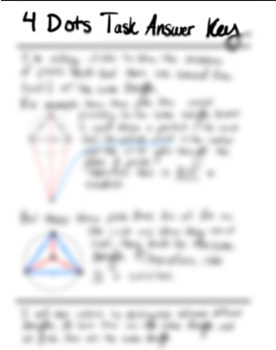4 Points Non-curricular Task
MsVisualizer
16 Followers
Grade Levels
8th - 12th, Higher Education
Subjects
Resource Type
Standards
CCSS8.G.A.1a
CCSSHSG-CO.D.12
CCSSHSG-CO.D.13
CCSSHSG-C.A.2
CCSSMP1
Formats Included
- Google Docs™
Pages
4 pages
MsVisualizer
16 Followers

Made for Google Drive™
This resource can be used by students on Google Drive or Google Classroom. To access this resource, you’ll need to allow TPT to add it to your Google Drive. See our FAQ and Privacy Policy for more information.
Description
The task: Draw 4 points such that when you connect each point to the other 3 points for a total of 6 line segments, there are exactly 2 distinct lengths of line segments. You must connect each point to every other point.
This product includes
- examples and non-examples to use when introducing this task to kids
- questions to support struggling and advanced groups
- a detailed two page answer key that demonstrates each solution visually
This worked really well with my honors Geometry students, it led perfectly into the symbols we use to show congruent side lengths and the definition of point, line segment, etc and many other geometry topics. It has also been a good challenge for my more advanced 6th and 7th grade students.
My Other Thinking Classroom Tasks
Noncurricular Task: Estimating Rational and Irrational Numbers
Total Pages
4 pages
Answer Key
Included
Teaching Duration
90 minutes
Report this resource to TPT
Reported resources will be reviewed by our team. Report this resource to let us know if this resource violates TPT’s content guidelines.
Standards
to see state-specific standards (only available in the US).
CCSS8.G.A.1a
Lines are taken to lines, and line segments to line segments of the same length.
CCSSHSG-CO.D.12
Make formal geometric constructions with a variety of tools and methods (compass and straightedge, string, reflective devices, paper folding, dynamic geometric software, etc.).
CCSSHSG-CO.D.13
Construct an equilateral triangle, a square, and a regular hexagon inscribed in a circle.
CCSSHSG-C.A.2
Identify and describe relationships among inscribed angles, radii, and chords.
CCSSMP1
Make sense of problems and persevere in solving them. Mathematically proficient students start by explaining to themselves the meaning of a problem and looking for entry points to its solution. They analyze givens, constraints, relationships, and goals. They make conjectures about the form and meaning of the solution and plan a solution pathway rather than simply jumping into a solution attempt. They consider analogous problems, and try special cases and simpler forms of the original problem in order to gain insight into its solution. They monitor and evaluate their progress and change course if necessary. Older students might, depending on the context of the problem, transform algebraic expressions or change the viewing window on their graphing calculator to get the information they need. Mathematically proficient students can explain correspondences between equations, verbal descriptions, tables, and graphs or draw diagrams of important features and relationships, graph data, and search for regularity or trends. Younger students might rely on using concrete objects or pictures to help conceptualize and solve a problem. Mathematically proficient students check their answers to problems using a different method, and they continually ask themselves, "Does this make sense?" They can understand the approaches of others to solving complex problems and identify correspondences between different approaches.





